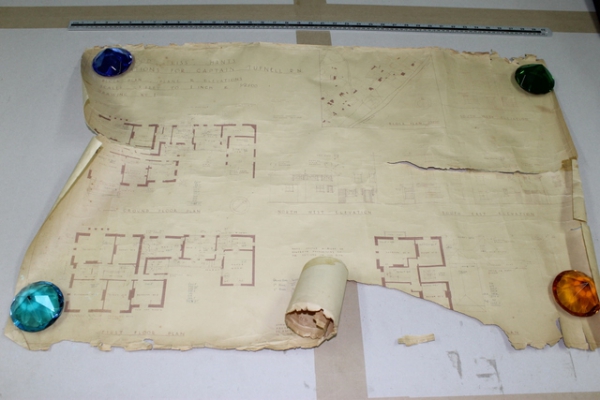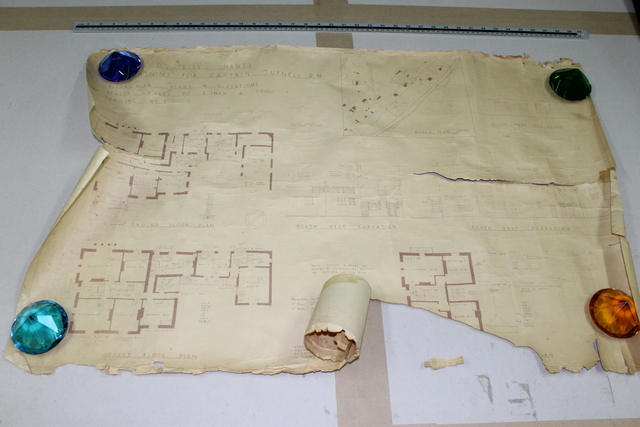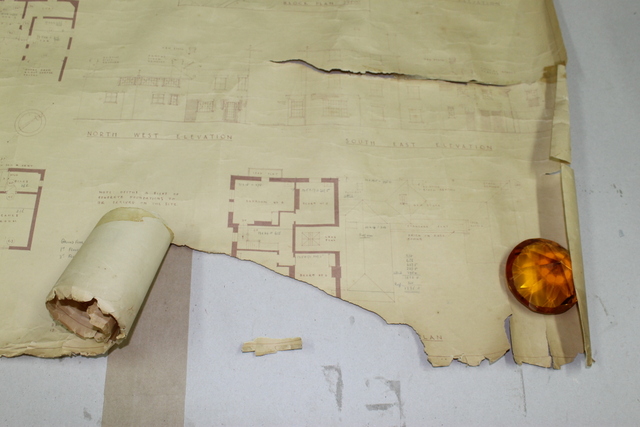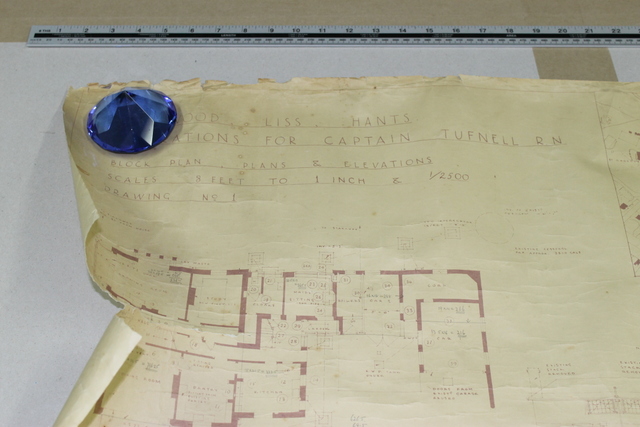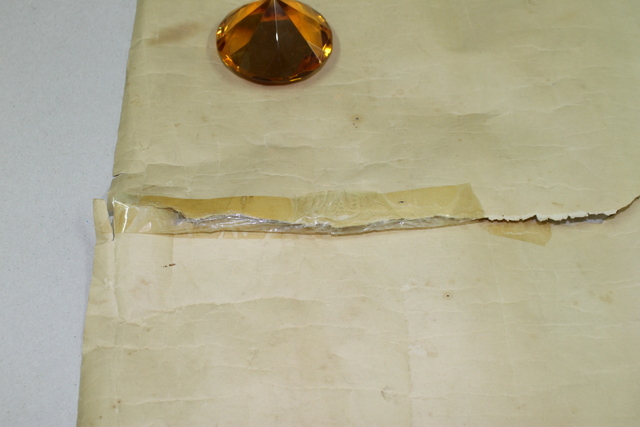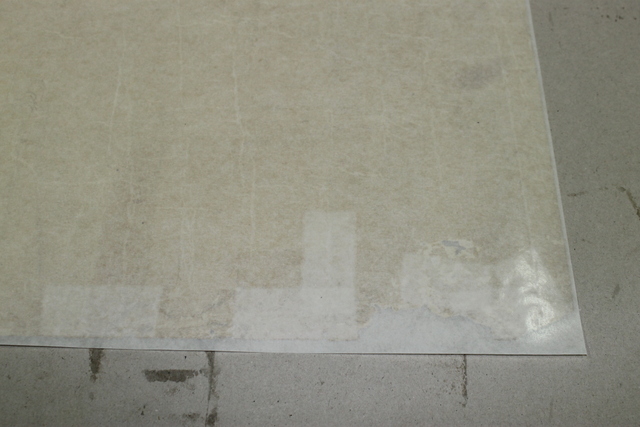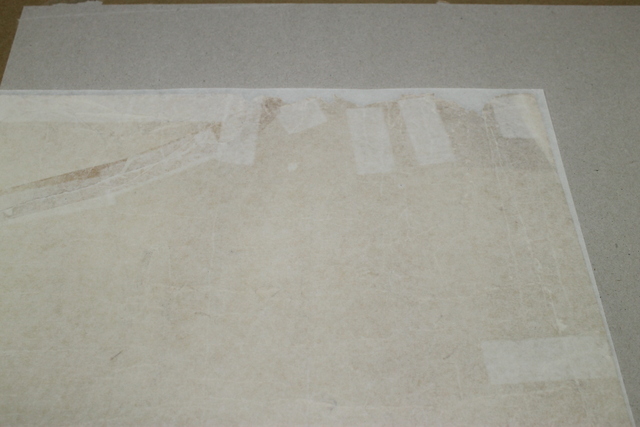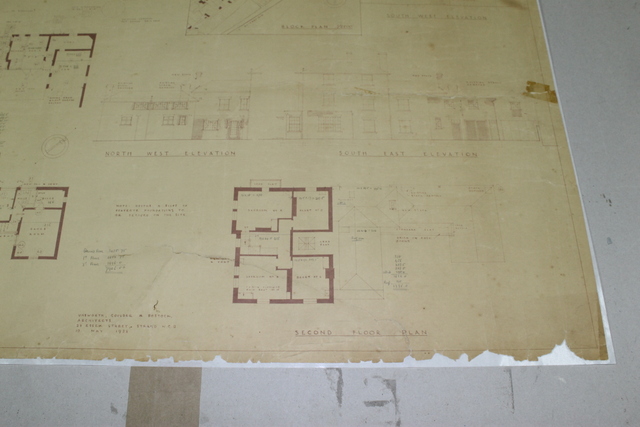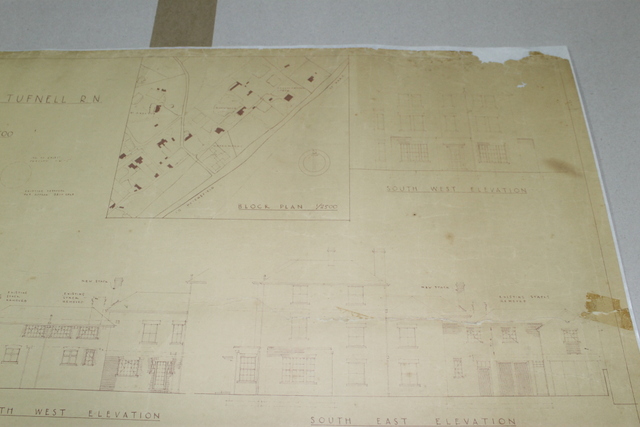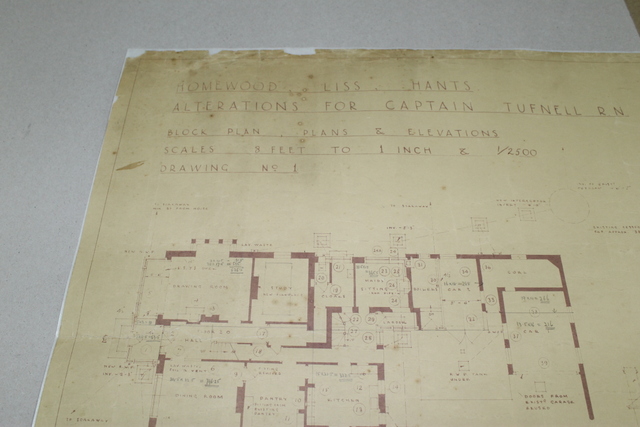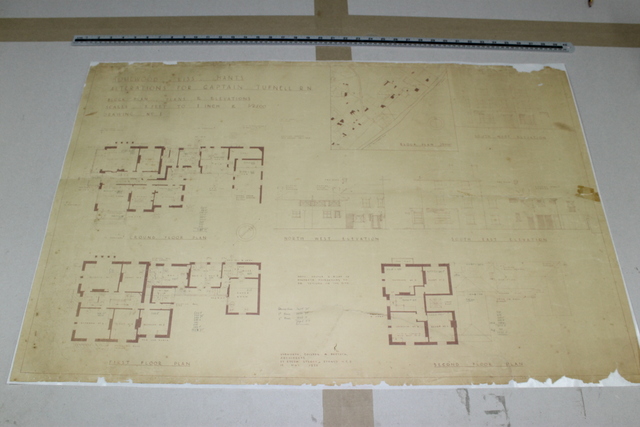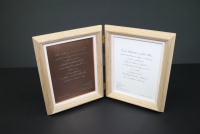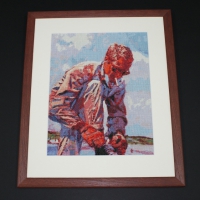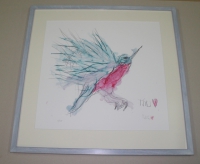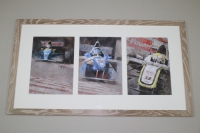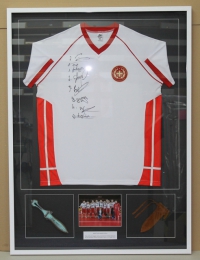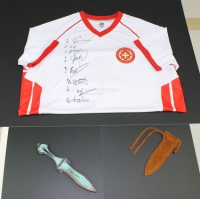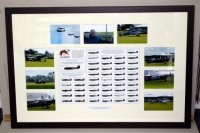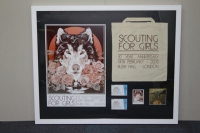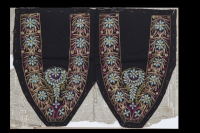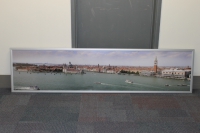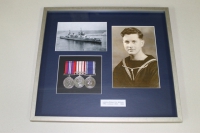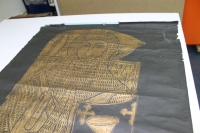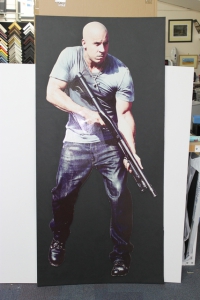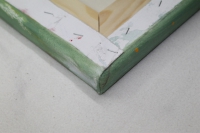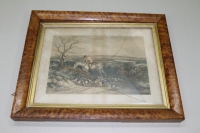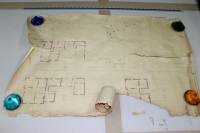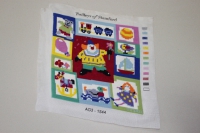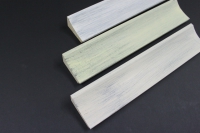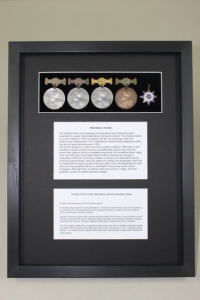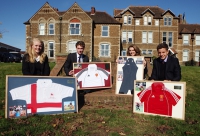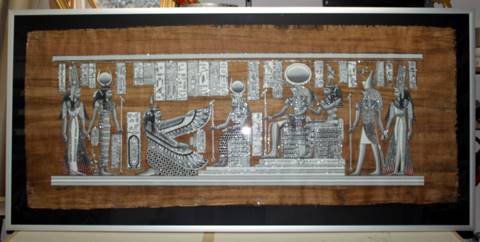The saying "It is never too late" could also be the title for this article as the plan used in this case study was in a pretty bad condition. The plan is of a house and is dated from the 1930's. The customer initially thought that it might be beyond repair but a closer inspection proved otherwise.
The image above shows the overall condition of the plan. Note the ruler above the plan is about a metre long to give an idea of the size of the plan. The colourful jewels are paper weights to keep the plan flat as it had been rolled up in a tight tube for many years.
There were several pieces of paper that were completely detached from the plan and there were also several significant tears in the paper. One of the biggest issues was the tightness of the rolled up paper as this made the job initially very difficult to work with so the whole plan needed to be carefully flattened under a heated press to get the plan as flat as possible.
There was also extensive use of Sellotape that a previous owner had used to try to repair the tears. This has to all be removed but the unfortunate aspect of Sellotape is the way it stains paper very quickly and leaves a residue of glue that is very hard to remove. Sellotape is definitely not recommended as a repair tape for paper.
Once the Sellotape has been removed the tears can be repaired with an appropriate neutral pH archival document repair tape that can easily be removed if needed and will not leave a stain.
The tears in the paper need to be aligned correctly and also the paper will tear unevenly so that one side of the tear will always align above the other side. This may also change along the length of the tear so care must be taken when applying the document repair tape to ensure the resulting repair is as invisible as possible.
Once the tears have been repaired the whole plan is laid onto to a sheet of archival repair tissue that is again easily reversible. The end result is a far more viewable plan which could now be framed. As the beginning of this case study announced, it's never too late but that sentence should have the word "almost" added to it!


